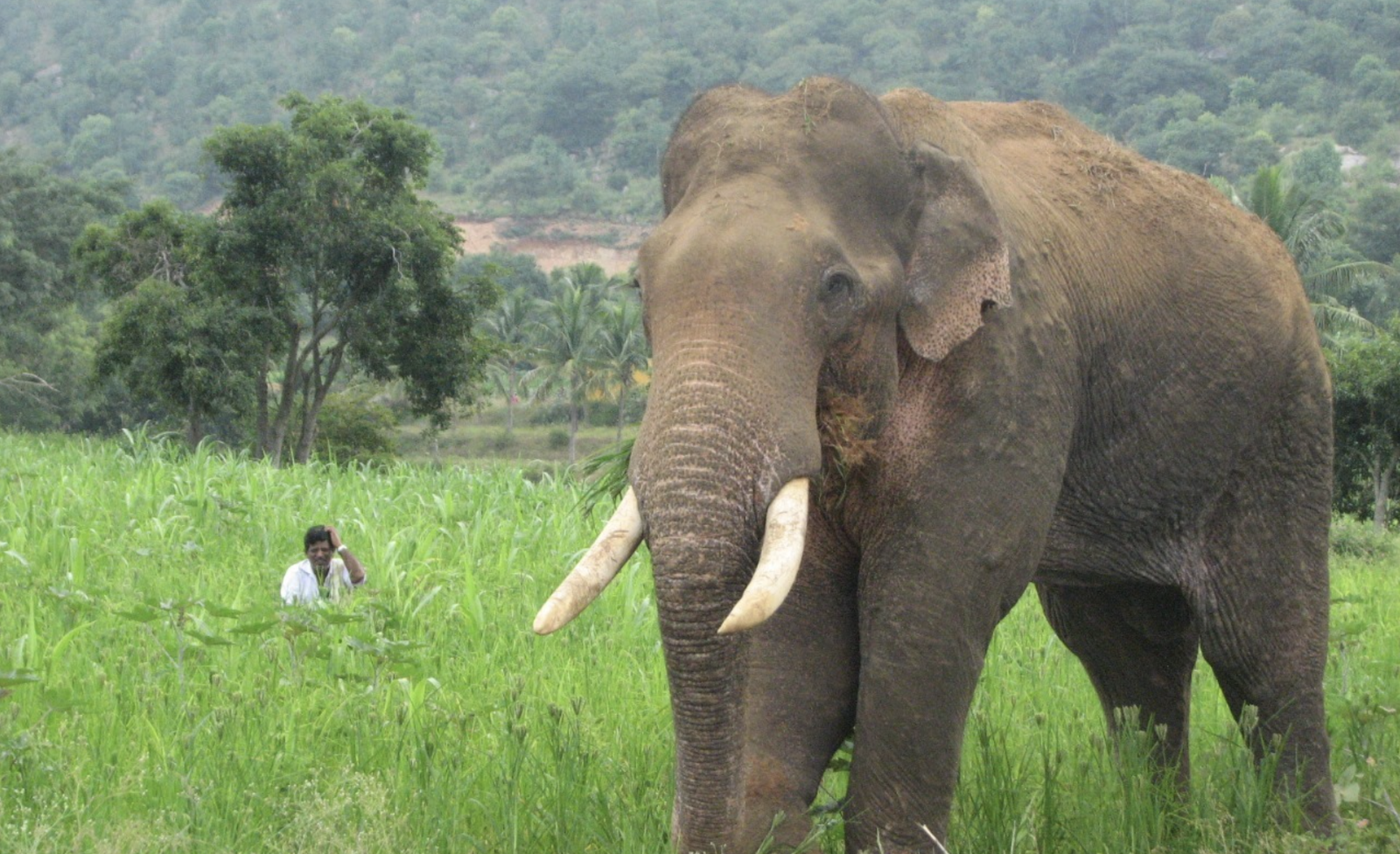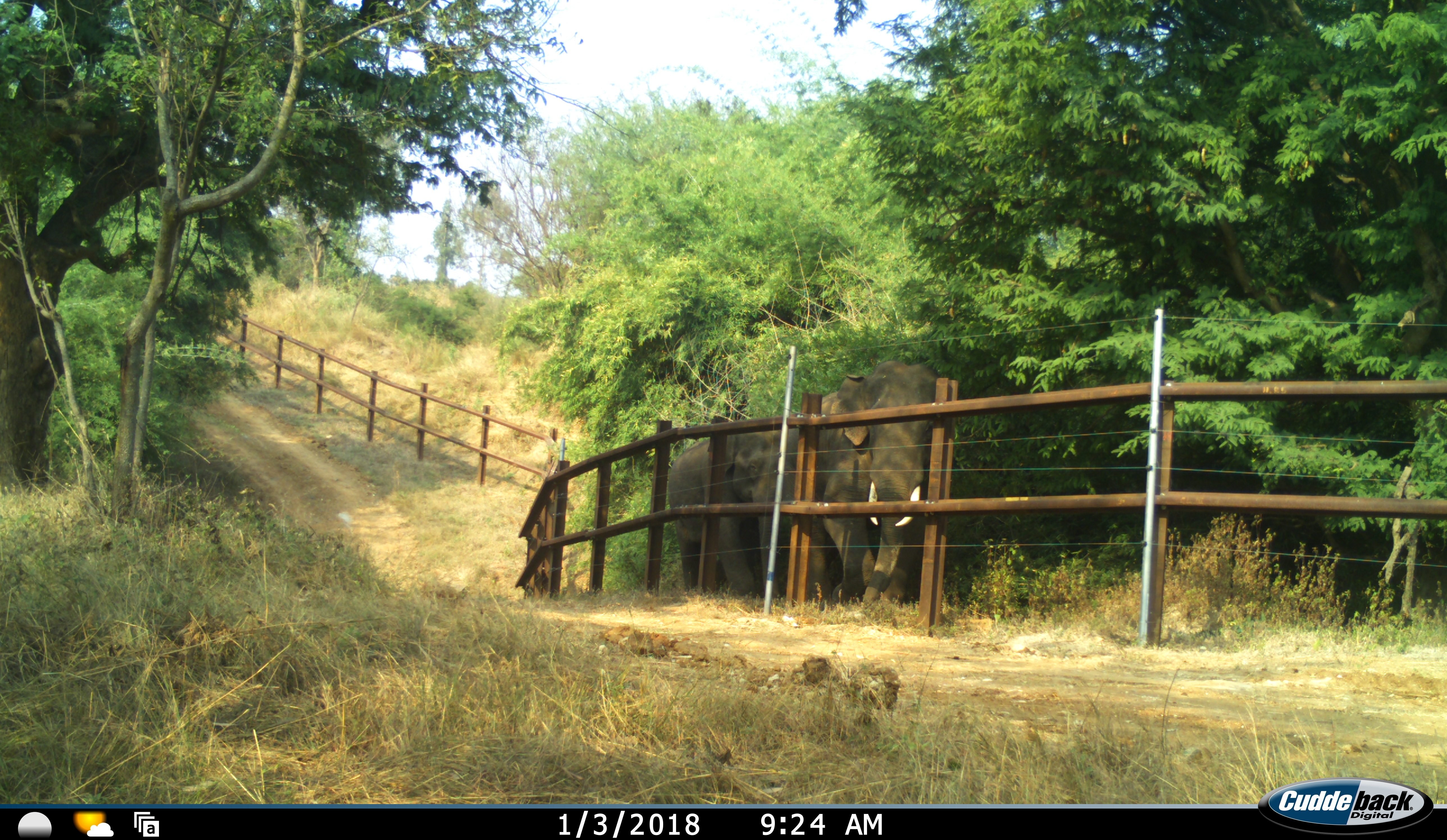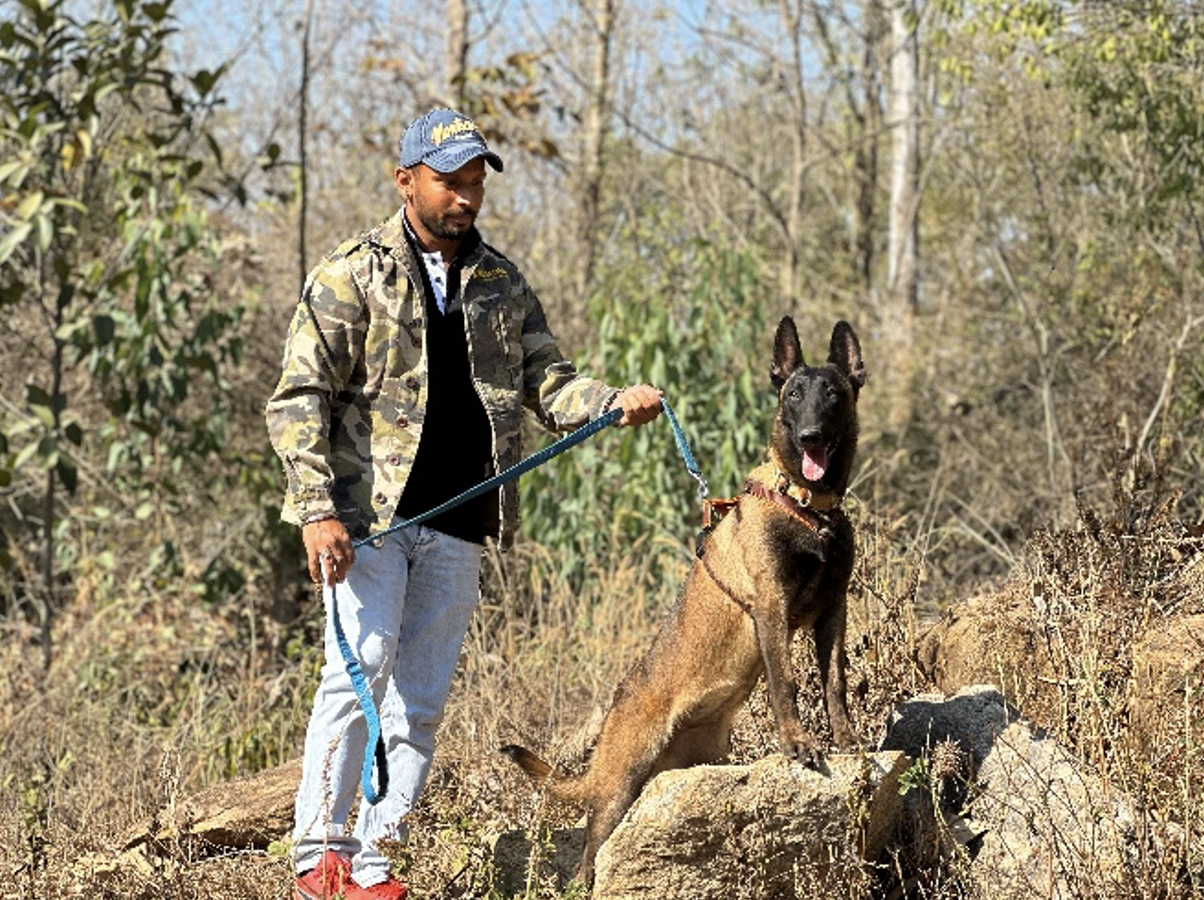In the heart of Bannerghatta National Park, Karnataka, A Rocha India has introduced the Elephant Anti-Depredation Dog Squad (EaDDS) to tackle rising human-elephant conflicts. Utilising trained Belgian Malinois dogs, this initiative aims to preemptively detect and deter elephants from entering farmlands, fostering harmonious coexistence between communities and wildlife.

At Bannerghatta National Park (BNP), the home of the Asian elephant, a novel initiative is taking shape, as A Rocha India, a conservation non-profit organisation introduces the Elephant Anti-Depredation Dog Squad (EaDDS). Human-elephant conflict is on the rise, exacerbated by habitat fragmentation and rapid land-use changes, and it is taking a heavy toll on human-animal interactions. This complex relationship calls for an innovative solution, keeping in mind the needs of the people and the safety of the elephants. The EaDDS is aimed at minimising conflict between elephants and communities using trained conservation dogs. This pioneering initiative is being spearheaded by A Rocha India in collaboration with the Karnataka Forest Department.

Challenges of mitigating conflict
Bannerghatta is contiguous with one of the largest Asian elephant habitats in the world. It is surrounded by 77 eco-sensitive villages practicing subsistence farming of cash and consumer crops. This delicate forest-farm interface creates opportunities for elephants to stray beyond protected areas into the farmlands, in search of food. The consequences are severe — crop damage, property losses and in extreme cases human and elephant fatalities. Alarmingly, within the state of Karnataka, the Bannerghatta division leads in instances of such conflict.
Since 2003, A Rocha India, has been actively involved in seeking and creating solutions to address human-elephant conflict in Bannerghatta. These solutions include experimentation with various barriers such as chilli-tobacco fences, railway barricades, and even the use of bio-acoustic devices which emit deterring sounds. Despite these efforts, conflict mitigation remains a significant challenge. Elephants, known for their cognitive abilities, tend to overcome and habituate themselves against these deterrents, perpetuating conflict in the region.

Currently, to mitigate conflict, an Elephant Task Force (ETF), comprising trained forest guards, use fireworks to drive elephants back into the forest. While this mechanism is useful, it has its challenges. There are delays in distress call response time, due to operations often occurring at night. The lack of visibility prevents drive-back operations from being successful and often lead to the excessive use of firecrackers, which can turn counter-productive by habituating the animals to the sound. In addition, discussions with farmers reveal that if they are made aware of when elephants are most likely to come, they can protect their crops better.
Acknowledging these challenges and suggestions, A Rocha India aimed at creating a method that would aid in improving the precision of active deterrence as well increasing the detection levels of elephants outside Protected Area network. The EaDDS is designed to act as a pre-emptive strategy and to alert the response team of elephant presence in the area and to narrow down the position of the animals. Conservation dogs, known for their olfactory abilities, will be used to patrol and track elephants along the forest- community boundaries. Once their presence is detected, the response team will push back elephants into the forest.
Canines to save our planet
Conservation dogs play a vital role in global conservation, research, and wildlife crime investigation. Their enhanced accuracy of scent detection and reduced time investment in training make them key assets in detecting a variety of odors such as animal or human tracks, blood, and urine. Using these sophisticated olfactory senses, A Rocha India aims to increase the detection probability of elephants in the forest-farm interface, offering a proactive conflict mitigation measure.
Conservation dogs emerge as a beacon of hope to address the conservation challenges of Bannerghatta, a solution that is comprehensive in its approach to promote coexistence between humans and elephants. The project will generate 4 – 6 fully trained conservation dogs dedicated to conflict resolution. Leveraging their remarkable olfactory abilities, these dogs will track elephant movement at night, enhancing the precision of mitigation efforts by eliminating / reducing false absences. Working line dogs, surpass human olfactory capabilities by 10,000 – 100,000 times. The canine squad will safeguard both elephants and humans by detecting and alerting potential conflict situations, contributing to an early warning system and creating a harmonious balance in the landscape.

Hope for harmonious co-existence
The success of conservation dogs is a well-established global phenomenon. For instance, Karelian bear dogs have proven effective in Alaska for mitigating brown bear conflicts and are commonly used to deter bears. Sniffer dogs in the UK are employed to locate rare and endangered species. Guardian dogs like Anatolian Shepherd, Great Pyrenees, Tibetan Mastiff, among others, are employed to protect livestock. Various breeds are employed for different conservation purposes in India. Belgian Malinois, beagle, fox hound, bloodhound, and mixed breed coonhounds are utilised to detect scents of illegal wildlife products. In the Melghat and Vidharbha region of Maharashtra, Belgian Malinois and Weimaraner contribute to corridor conservation efforts. In Kaziranga, an anti-poaching dog squad, has significantly deterred wildlife crimes.
Building on the promising success of the EaDDS, there is a potential for extending this impactful initiative to other states within the Asian elephant’s home range in India. A Rocha India has actively engaged with key stakeholders, like the Karnataka Forest department and the Central Reserve Police Force (CRPF), to discuss and gain support for the project. These discussions have not only garnered confidence in the successful execution of the project but have also provided valuable insights, including recommendations on the selection of the canine breed.

After careful consideration, the chosen breed for the EaDDS is the Belgian Malinois. The Belgian Malinois is a versatile and intelligent breed renowned for its agility, keen intellect, and strong work ethic. Originally bred as herding dogs, they have evolved into exceptional working dogs with a natural drive for obedience and tasks. In the context of the EaDDS initiative, the choice of the Belgian Malinois aligns with the demands of the task. This strategic decision marks a significant step forward in addressing human-elephant conflicts and underscores the collaborative efforts to enhance wildlife conservation and coexistence. This canine training methodology for tracking elephants is a new innovation that is being developed with experts on canines and pachyderms, carefully and scientifically considering behaviour and ecology of both species.
As we navigate the complex narrative of human-elephant conflicts, the EaDDS offers a glimmer of hope for a more harmonious coexistence. By tapping into the incredible capabilities of conservation dogs, we not only safeguard lives but also promote a sustainable balance between human needs and wildlife conservation.
Drawing inspiration from the successes of A Rocha India’s conservation efforts in Bannerghatta, we envision a future where the EaDDS becomes a standard for conflict mitigation, transcending boundaries and fostering a world where elephants and humans peacefully share the landscapes, that they both call home.